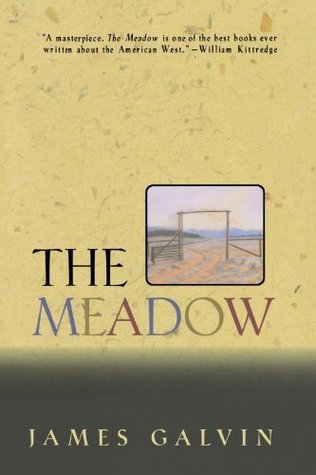What do you think?
Rate this book


240 pages, Paperback
First published April 1, 1992
The Meadow moves in short bursts of thought, and Marilynne Robinson on the back cover is quite right to note that "Its language reenacts the discipline through which wilderness refines consciousness." About Lyle Van Waning, one is reluctant to generalize, other than to say that somebody ought to write a book about him. Our reluctance owes itself to Galvin's own refined consciousness, a lyricism that renders these short essays full of gracenotes, as when, in one short essay, Lyle is watched as he hays the meadow, a coyote trailing ten feet behind, pouncing on field mice. Galvin writes: "A lot of people would shoot a coyote if they got that close to it, which is why a lot of people never get that close." Here the refinement of Twainian hyperbole aphoristically tailors us to Lyle's adaptation to his own scene: "As the price of defiance they [coyotes] have to work harder than most animals just to stay alive." The resemblance here is between Lyle and the coyote, but we would not see the connection without the author's own act of attention, which elsewhere he insists is the value most necessary to Lyle's adaptiveness. This attention is the meaning of the tall-tale telling Galvin enacts when he tells us of Lyle's aid in helping the author build his own house on the mountain. On the one hand, Lyle does not want the responsibility for helping the ephebe build his house; on the other hand, he can't help but attend to what's going on around him (the author and Lyle live about a mile away from each other), so he ends up advising and then pitching in to help Galvin raise the roof's top logs into position -- work Galvin admits he would not have been able to do himself, and so he wonders aloud to Lyle how Lyle managed to do it on all the houses Lyle has built; Galvin, like Twain in his Jumping Frog tale, sticks with the enigma: "'You know, Jim, I've often wondered that myself'," Lyle answers.
He built miles of fences, yards of homemade wooden pipe, a house, barns, sheds, corrals. He put up hay with horses and got down to scythe among the willows where the mower couldn't go. He never quit from the last star to first, proving that the price of independence is slavery. (p. 11).